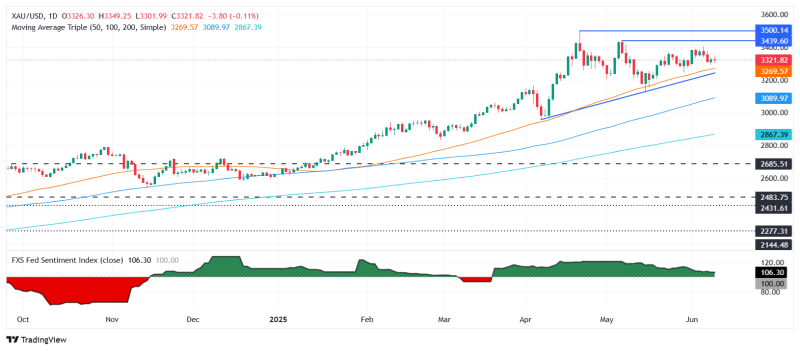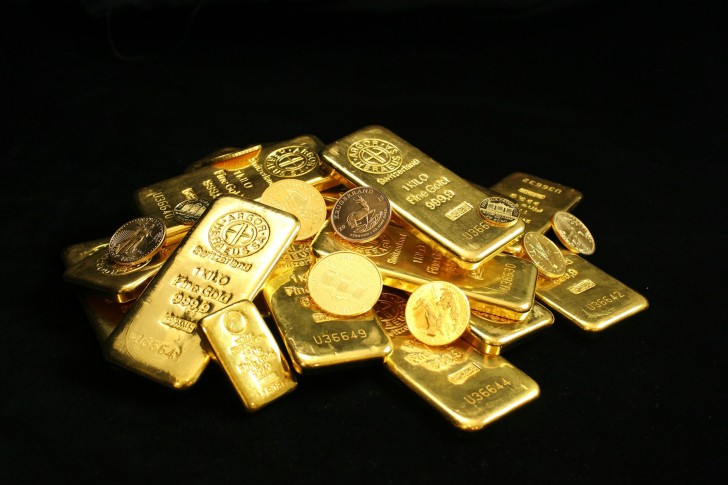Gold's holding its ground above the key $3,300 mark, getting a nice lift from what looks like genuine progress in US-China talks. The shiny metal's trading at $3,328 right now, up a modest 0.10%, but that's enough to keep investors feeling pretty good about things.
After hitting a rough patch earlier and dropping near $3,300, gold managed to bounce back thanks to some encouraging chatter between US and Chinese officials meeting up in London. Everyone's keeping a close eye on how this plays out, especially with some big US inflation numbers coming down the pipeline that could really shake things up for the Fed's next moves.
Gold (XAU) Gets a Boost from Better US-China Vibes
The mood's definitely shifted for the better after US and Chinese officials sat down together in London – and honestly, it's about time. This diplomatic thaw has got people feeling more confident about taking on some risk, which explains why stocks are climbing while gold's managing to stay steady.
But here's the thing – traders aren't getting too carried away just yet. Everyone's waiting for those May inflation numbers to drop, and there's a real chance they're gonna show prices have been climbing thanks to all those Trump tariffs hitting American wallets. If that happens, don't expect the Fed to budge much from their current 4.25%-4.50% interest rate range.
The dollar's been doing its own thing too, bouncing back from a low of 98.86 to sit at 99.07, up about 0.06%. That's putting a bit of pressure on gold, but the yellow metal's still got that safe-haven appeal working for it.
XAU Charts Tell a Story of Steady Support
Looking at the charts, gold (XAU) has found some pretty solid footing around that $3,290-$3,300 zone – there's a nice support line there plus it's where we hit the week's low. The RSI is still looking bullish, which suggests there's more room to run on the upside.
Here's some good news that came out today: small business owners are feeling way better about things. The NFIB Optimism Index jumped from 95.8 in April all the way up to 98.8 in May – that's the first time in four months we've seen improvement instead of things getting worse. Apparently, all that uncertainty about tariffs was really weighing on these folks.
Treasury yields are pretty much flat right now, with the 10-year sitting at 4.474% and real yields stuck at 2.16%. That's keeping a lid on how high gold can really fly, but it's not exactly pushing it down either.
If gold can punch through that $3,350 ceiling, we could be looking at a run toward $3,400, maybe even $3,450 or that all-time high at $3,500. But if it slips below $3,300? Well, then we're probably headed for the 50-day moving average at $3,265, and after that, the old April high turned support at $3,167.

Geopolitical Tensions and Inflation Data to Drive Gold (XAU) Direction
Looking ahead, several factors could influence gold's trajectory in the coming sessions. The upcoming US CPI release is expected to show inflation rising from 2.3% to 2.5% year-over-year, with core figures projected to increase from 2.8% to 2.9%. These inflation expectations could limit outflows from gold if the data confirms persistent price pressures in the US economy.
Geopolitical developments also remain a key consideration for gold investors. US President Trump's recent comments to Fox News regarding Iran's increasingly aggressive stance in nuclear negotiations, combined with Russia's territorial claims in Ukraine's east-central region, continue to support safe-haven demand for precious metals.
Money markets currently price in 43.5 basis points of Federal Reserve easing toward the end of the year, according to Prime Market Terminal data. This expectation of potential rate cuts could provide additional support for gold prices, as lower interest rates typically reduce the opportunity cost of holding non-yielding assets like precious metals.
The combination of diplomatic progress, inflation concerns, and ongoing geopolitical tensions creates a complex backdrop for gold trading. While US-China talks offer hope for reduced trade friction, the broader economic and political landscape suggests that gold's role as a portfolio hedge remains relevant for investors navigating uncertain times.
 Peter Smith
Peter Smith

 Peter Smith
Peter Smith


